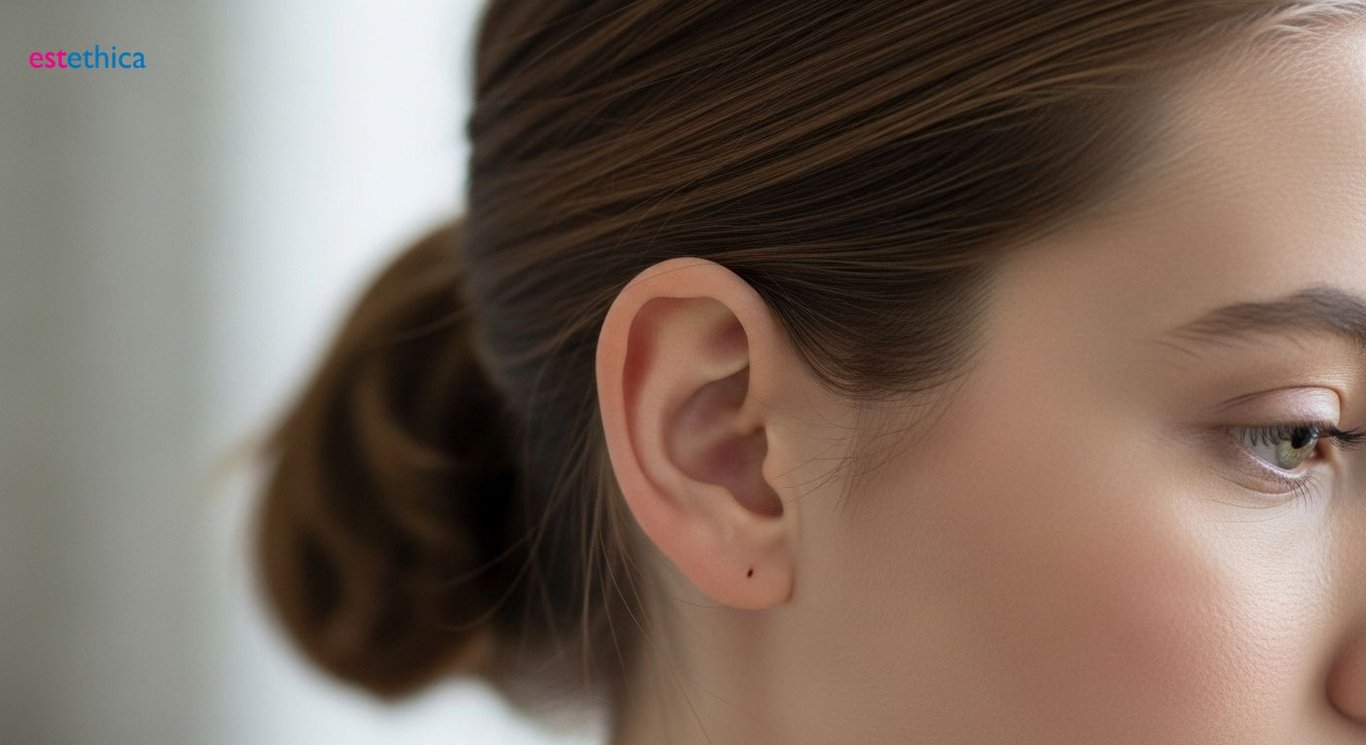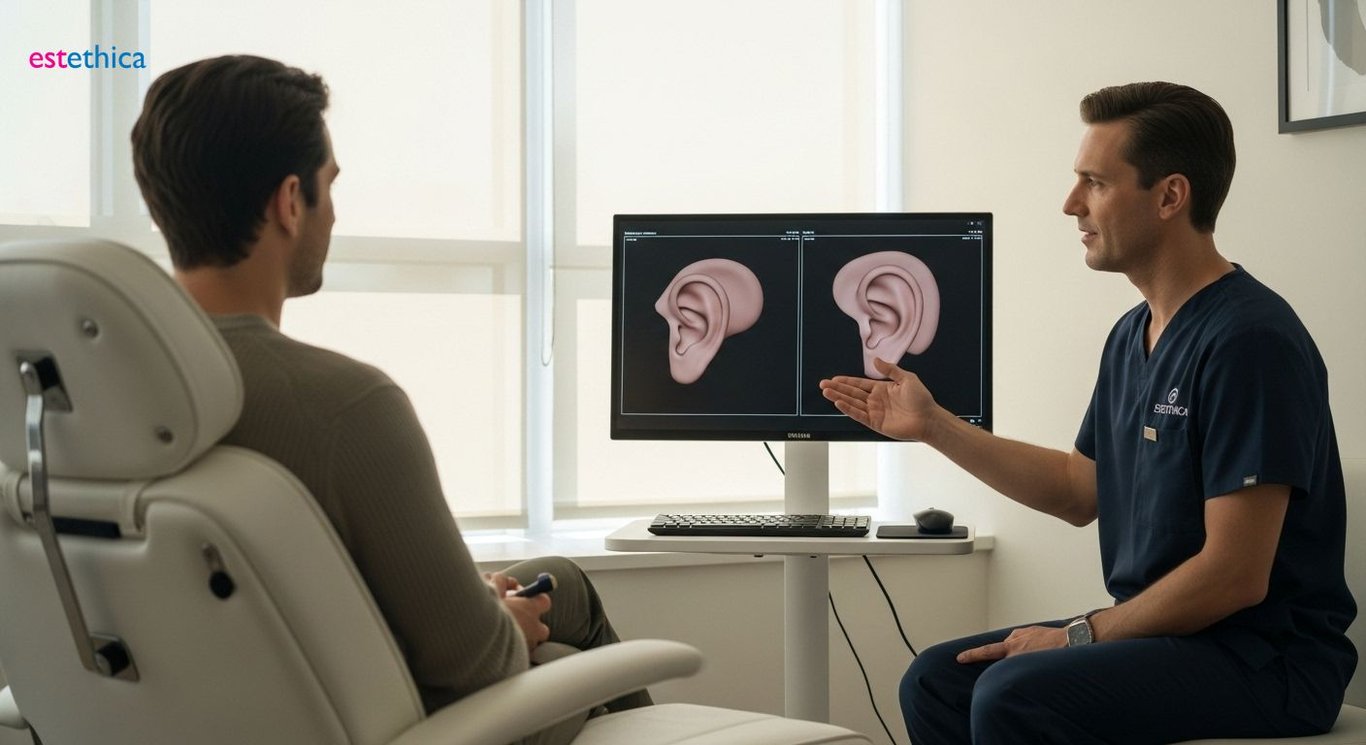Ear Reshaping: Sculpting Confidence Through Cosmetic Ear Surgery
Learn all about ear surgery options and transformations for cosmetic harmony with our complete guide.
Ear reshaping, known scientifically as otoplasty, offers transformative results for individuals seeking cosmetic harmony. From addressing protruding ears to providing subtle reshaping, this procedure holds the potential for enhancing one’s appearance and boosting self-confidence.
Decoding Ear Anatomy: Understanding the Canvas for Reshaping
Key Anatomical Components in Ear Reshaping
Before exploring ear reshaping, understanding the ear's anatomy is vital. The external ear, or auricle, is a complex structure composed of cartilage covered by skin. The helix, the outer rim of the ear, and the antihelix, the curved ridge inside the helix, define the ear's shape. The concha, the deep cavity leading to the ear canal, and the lobule, the fleshy earlobe, are also important. Each of these components contributes uniquely to the ear's overall appearance, making it essential for surgeons to have a deep understanding during cosmetic ear surgery. The artistry of ear surgery lies in harmonizing these elements to achieve natural-looking results.
- Helix: The outer rim that defines the ear's curvature, often adjusted in ear surgery for symmetry.
- Antihelix: The inner curved ridge that supports the ear's structure, reshaped to correct prominent ears.
- Lobule: The fleshy earlobe, which can be adjusted for size and shape to balance overall aesthetics.
Surgical Planning Based on Anatomical Knowledge
Effective ear reshaping begins with a comprehensive assessment of the patient's ear anatomy. Surgeons evaluate the proportions and relationships between the helix, antihelix, concha, and lobule. This analysis guides the surgical plan, ensuring that the reshaping addresses specific concerns while maintaining a natural appearance. For instance, in cases of protruding ears, the antihelix may need to be folded back to reduce prominence. Understanding the underlying cartilage structure allows for precise and predictable outcomes in ear pinning procedures. Precise planning ensures optimal results, aligning patient expectations with surgical possibilities.
- Detailed Evaluation: Surgeons thoroughly examine ear structure for tailored planning.
- Strategic Incisions: Precise cuts ensure natural-looking reshaping outcomes.
- Symmetrical Adjustments: Attention to balance achieves harmonious aesthetic results.

Pinnaplasty Pioneers: Exploring Surgical Techniques for Ear Pinning
Evolution of Incision Techniques in Ear Pinning
The evolution of incision techniques in ear pinning has significantly enhanced patient outcomes and satisfaction. Early methods often involved visible incisions on the front of the ear, which sometimes led to noticeable scarring. Modern techniques, however, prioritize hidden incisions behind the ear. This approach allows surgeons to access and reshape the cartilage without leaving visible marks. The use of advanced surgical tools and meticulous suturing further minimizes scarring, ensuring a more natural and aesthetically pleasing result. The shift towards less invasive methods reflects a broader trend in cosmetic surgery, emphasizing minimal disruption and quicker recovery.
- Hidden Incisions: Incisions placed behind the ear minimize visible scarring.
- Advanced Tools: Use of precision instruments enhances surgical accuracy.
- Meticulous Suturing: Careful closure reduces scarring and promotes healing.
Cartilage Reshaping Methods for Natural Results
Achieving natural-looking results in pinnaplasty requires sophisticated cartilage reshaping methods. Surgeons employ various techniques to set prominent ears closer to the head while maintaining a harmonious shape. Cartilage scoring, for example, involves making small cuts to weaken the cartilage, allowing it to be bent and reshaped more easily. Suturing techniques are then used to hold the cartilage in its new position. Some surgeons also use cartilage-sparing methods, which preserve more of the natural cartilage structure. These approaches ensure that the reshaped ear looks both natural and balanced. The goal is to create an outcome that enhances the patient's overall appearance without appearing artificial.
- Cartilage Scoring: Weakens cartilage for easier reshaping.
- Suturing Techniques: Holds reshaped cartilage in the desired position.
- Cartilage-Sparing Methods: Preserves natural cartilage structure for a balanced look.

Beyond Surgery: Non-Invasive Ear Correction and Modern Options
Exploring Non-Surgical Ear Reshaping Techniques
Non-surgical options for ear reshaping are gaining traction, providing individuals with temporary solutions that don't require a permanent commitment. These methods cater to those seeking subtle alterations or who are hesitant about undergoing surgery. Non-invasive ear correction techniques, such as ear modeling and clip-on solutions, offer a glimpse into potential aesthetic changes. These options are particularly appealing for younger individuals or those looking for a trial period before considering more permanent surgical interventions like cosmetic ear surgery. Non-surgical methods provide flexibility and reversibility, aligning with a growing preference for less invasive cosmetic enhancements. In fact, a recent survey showed that about 35% of people are considering non-surgical cosmetic procedures.
- Ear Modeling: Uses molds to gradually reshape the ear.
- Clip-On Solutions: Provides temporary adjustments without surgery.
- Non-Invasive: Offers minimal risk and no downtime.
Benefits and Limitations of Non-Invasive Methods
While non-surgical ear correction methods offer several advantages, it's crucial to understand their limitations. These techniques are generally suitable for minor corrections and may not achieve the same dramatic results as surgical ear surgery or ear pinning. The effectiveness of non-invasive options can vary depending on individual ear anatomy and the specific issue being addressed. For instance, ear modeling may be effective for reshaping soft cartilage in infants, but less so for adults with fully developed cartilage. While these methods offer a lower risk profile, they often require consistent application and may not provide a permanent solution. It is important to consult with a specialist to determine the most appropriate approach based on individual needs and expectations.
- Suitable for Minor Corrections: Best for small aesthetic adjustments.
- Variable Effectiveness: Results depend on individual ear structure.
- Requires Consistent Application: Often needs ongoing use for maintenance.

Ear Surgery Journeys: Before & After Transformations and Real Stories
Navigating the Preoperative Phase of Ear Surgery
The preoperative phase of ear surgery is critical for setting expectations and ensuring a smooth surgical experience. Patients undergo thorough consultations to discuss their aesthetic goals and concerns. Surgeons conduct detailed evaluations of the ear structure, explaining the potential outcomes and limitations of the procedure. Medical history and current health status are carefully reviewed to identify any factors that may affect the surgery or recovery. Preoperative instructions, such as avoiding certain medications and lifestyle adjustments, are provided to optimize healing and minimize risks. This comprehensive approach ensures that patients are well-informed and prepared, contributing to higher satisfaction rates. In fact, studies show that patients who are well-informed preoperatively report a 20% increase in satisfaction.
- Detailed Consultations: Discuss aesthetic goals and surgical expectations.
- Thorough Evaluations: Assess ear structure and overall health.
- Preoperative Instructions: Provide guidelines for optimal healing.
Achieving Successful Outcomes: The Postoperative Experience
The postoperative phase is crucial for achieving successful and lasting results from ear surgery. Patients receive detailed instructions on wound care, pain management, and activity restrictions. Regular follow-up appointments allow surgeons to monitor healing progress and address any concerns. Wearing a protective headband is often recommended to support the newly reshaped ears and minimize swelling. The recovery period varies, but most patients can resume normal activities within a few weeks. Adhering to postoperative guidelines is essential for preventing complications and ensuring optimal aesthetic outcomes. By following these guidelines, patients can enjoy the full benefits of their ear reshaping procedure.
- Wound Care: Proper cleaning and dressing to prevent infection.
- Follow-Up Appointments: Regular check-ins to monitor healing.
- Protective Headband: Supports ears and minimizes swelling.
Precision Ear Reshaping Through Advanced Cartilage Scoring and Suturing Techniques
estethica employs advanced cartilage scoring techniques to weaken and reshape ear cartilage with precision, ensuring natural-looking results in pinnaplasty. Meticulous suturing methods hold the reshaped cartilage in the desired position, minimizing scarring and promoting optimal healing.
estethica's surgeons possess extensive expertise in ear anatomy and surgical planning, ensuring tailored approaches for each patient. Their deep understanding of the ear's structure allows for precise adjustments to the helix, antihelix, and lobule, achieving balanced and harmonious aesthetic outcomes. This expertise extends to both surgical and non-surgical ear correction methods, providing patients with comprehensive treatment options.
Comprehensive Preoperative Planning and Postoperative Care for Optimal Ear Surgery Outcomes
estethica ensures a smooth surgical experience through detailed preoperative consultations, thorough evaluations of ear structure, and comprehensive preoperative instructions. Postoperative care includes detailed wound care instructions, regular follow-up appointments, and the use of protective headbands to support healing. This comprehensive approach minimizes complications and ensures lasting, successful results for patients.
estethica is dedicated to providing exceptional patient experiences, offering personalized care and support throughout the entire ear reshaping journey. The hospital’s commitment to patient satisfaction is reflected in its world-class facilities and experienced medical team, ensuring each patient achieves their desired aesthetic outcomes with confidence.
Frequently Asked Questions
What is ear reshaping (otoplasty) and who is a good candidate?
What are the different surgical techniques used in ear pinning (pinnaplasty)?
Are there non-surgical ear correction options available?
What can I expect during the recovery period after ear surgery?
How does ear reshaping differ from other types of cosmetic ear surgery?
Achieve your aesthetic goals with estethica's expert guidance and personalized treatment plans.
📞 Schedule Your Free Consultation!